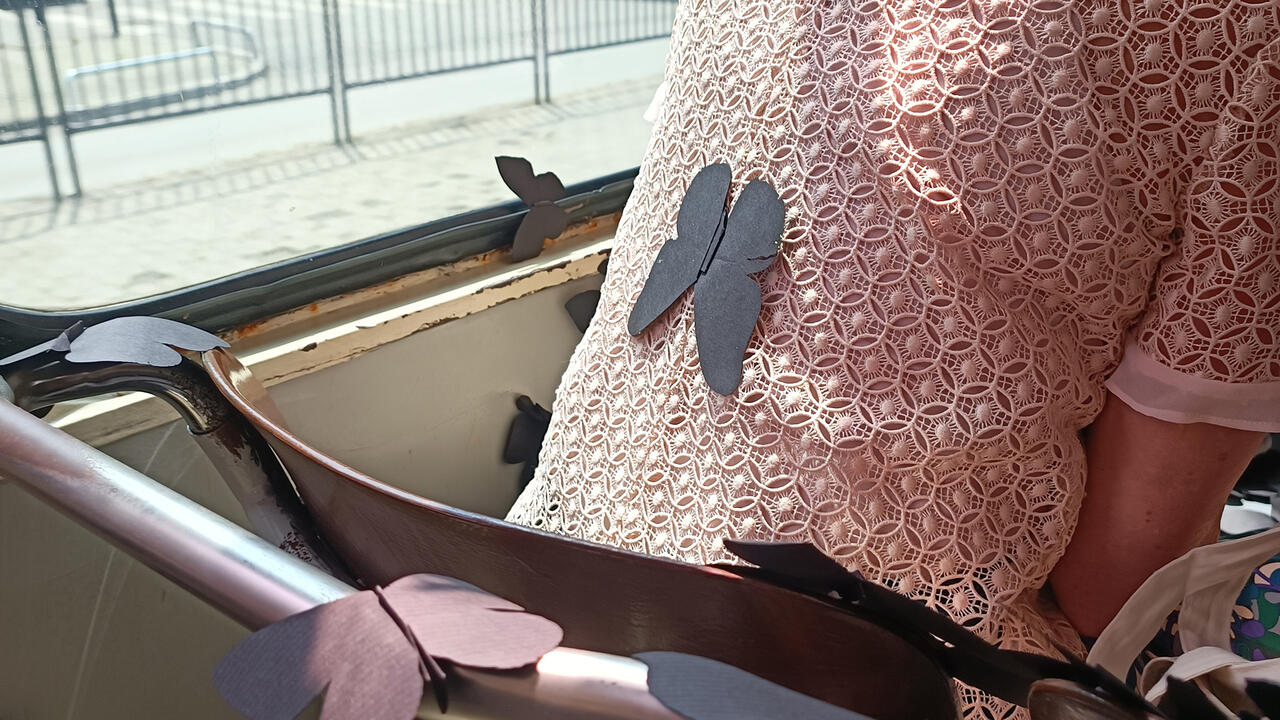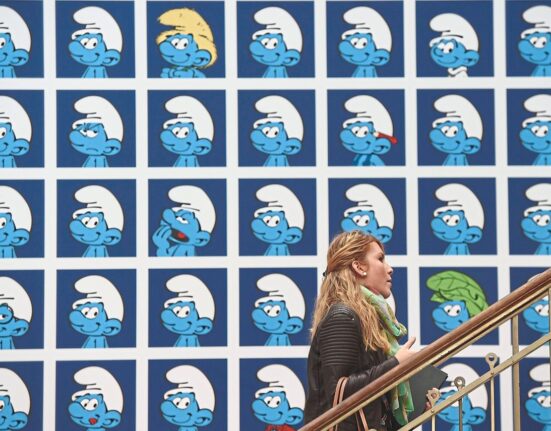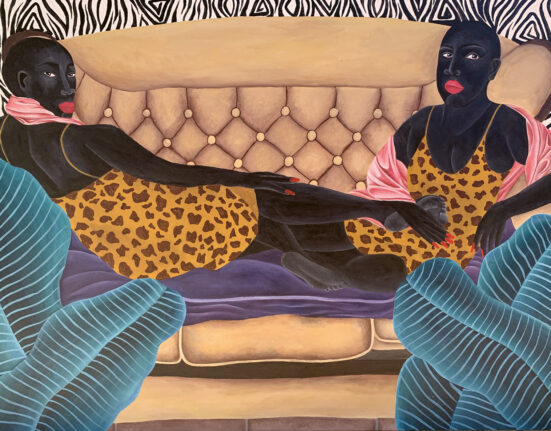The fifth edition of the Art Encounters Biennial in Timișoara, Romania is more ambitious than ever. Since 2015, the programme has been dedicated to enriching the Romanian art scene by establishing sustainable connections between artists and institutions, within the country and beyond. For this year’s edition, My Rhino is Not a Myth, the organizers have invited 50 local and international artists, aiming to unite art, science and literature to fight the global rise of authoritarianism and populism. Taking inspiration from French-Romanian playwright Eugène Ionesco’s Rhinocéros (1959), which tells the story of a small provincial town whose inhabitants gradually transform into rhinoceroses (a process they deny is happening to them), the biennial uses science fiction to unpack the problematic legacies of misconceptions about Eastern Europe.

Exploring Timișoara ahead of the exhibition, I found that the city was not what I had expected. Travelling into town from the airport at night, I initially felt myself to be transported to my childhood home of Sofia, the dark streets of the Romanian city seeming nearly identical to those of the Bulgarian capital. Even the trams felt familiar. For a moment, I was 15 again, walking to my French lessons as I watched the yellow Number 12 tram grind down Graf Ignatiev Street, the air heavy with the smell of roasted chestnuts wrapped in newspaper, sold at the nearby market. By daylight, however, Timișoara reveals its distinct architectural dissonance, where a jarring mosaic of beautiful and derelict buildings competes for your attention. Near Union Square (Piața Unirii), grand Viennese Baroque, all ornamented windows and vibrant colours, meets crumbling Art Nouveau. The city’s western influence is noticeable in its airy piazzas, lively squares filled with boutique, late-night bars where strangers engage in uncharacteristic friendliness. These qualities of juxtaposition speak to the heart of the Biennial – and so much of Eastern Europe.
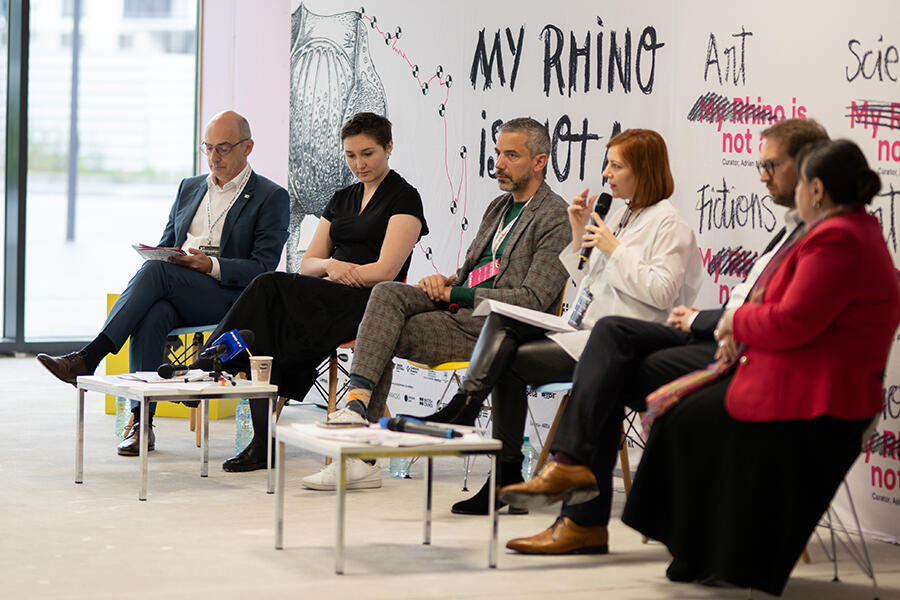
During a breakfast hosted by Timișoara’s mayor, Dominik Fritz, we were told of the prejudice of foreign visitors, who are usually shocked to discover that the city is not a caricature of communist brutalism with an outdated mindset to match. ‘This is not a Disneyland set,’ Fritz joked: ‘we did not build these buildings and create this diverse population for the Capital of Culture title.’ In fact, Timișoara’s diversity has long been integral to its identity. It is the largest Romanian city in Banat, a region whose multicultural landscape is a product of its long history of Austro-Hungarian and Ottoman imperialism, which gave rise to an ethnocultural balance between Romanians, Serbians, Hungarians and Bulgarians. Together these different communities have built a cosmopolitan culture of tolerance and solidarity.
Discussing the organisation of the biennial at the opening ceremony, curator Adrian Notz mentions its improvisational structure by referencing the ‘Romanian miracle’: the belief that everything will ultimately fall into place. Notz evoked this rule with a healthy hint of scepticism – think of Henrik Ibsen’s Nora in A Doll’s House (1879), her blind trust in the ‘miracle of miracles’ that never comes into fruition – but his remark also alluded to the benefits of a nonlinear curatorial process. Biennials are after all meant as platforms for experiment and risk; they help artists discuss, diffuse and test ideas directly in the public sphere, with the hope that everything falls into place.
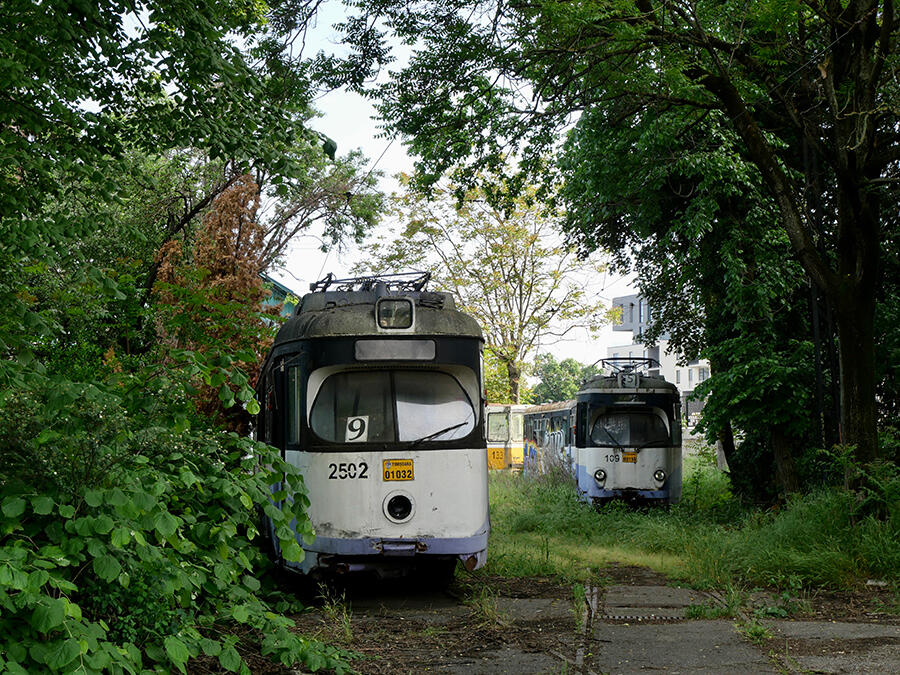
The unruly design of the Biennial reflects the city in which it is staged. Unlike the militaristic precision of some western parks, Timișoara’s vegetation runs wild: tall oak trees seep out into the streets, their branches nearly touching the speeding cars; bushes greedily engulf buildings; stubborn weeds grow between rails and the pavement at the 1927 tram depot STPT Multiplexity, one of the many sites revitalized for the Biennial. The lofty hangar has been stripped down to its skeletal form; its graffitied trams transformed into vessels for the installations of various artists. Walking through them, you become acutely aware of your role as a passenger into the not-so-distant past. Janiv Oron’s sound piece Visitors (2023) examines this liminal state through the creation of creature-like amulets, which use the windows and walls of the derelict trams as resonant bodies to recreate the whispers, sighs, arguments and small talk of former passengers. The post-human world they inhabit appears oddly familiar.
The biennial’s consistent focus on movement and transition – embodied by the tram – highlights Romanians’ frustrations with the stagnant and outdated ways in which their country is perceived. Though Timișoara embodies the European ideals of diversity and solidarity, Romania and the rest of the Balkans are subject to the western-centric hierarchy of European politics. As Fritz remarked last December after Romania’s application to join the Schengen Area was rejected, ‘until we recalibrate the mental hierarchy that exists in the European Union, until we appreciate the voices and experiences of Eastern Europeans instead of reducing them to the Communist regime, we will lack a sense of unity within Europe’. Timișoara’s biennial cannot undo the biases that confine Eastern Europe to a limited role in the eyes of the West, but it can start a conversation on the importance of dispelling them.
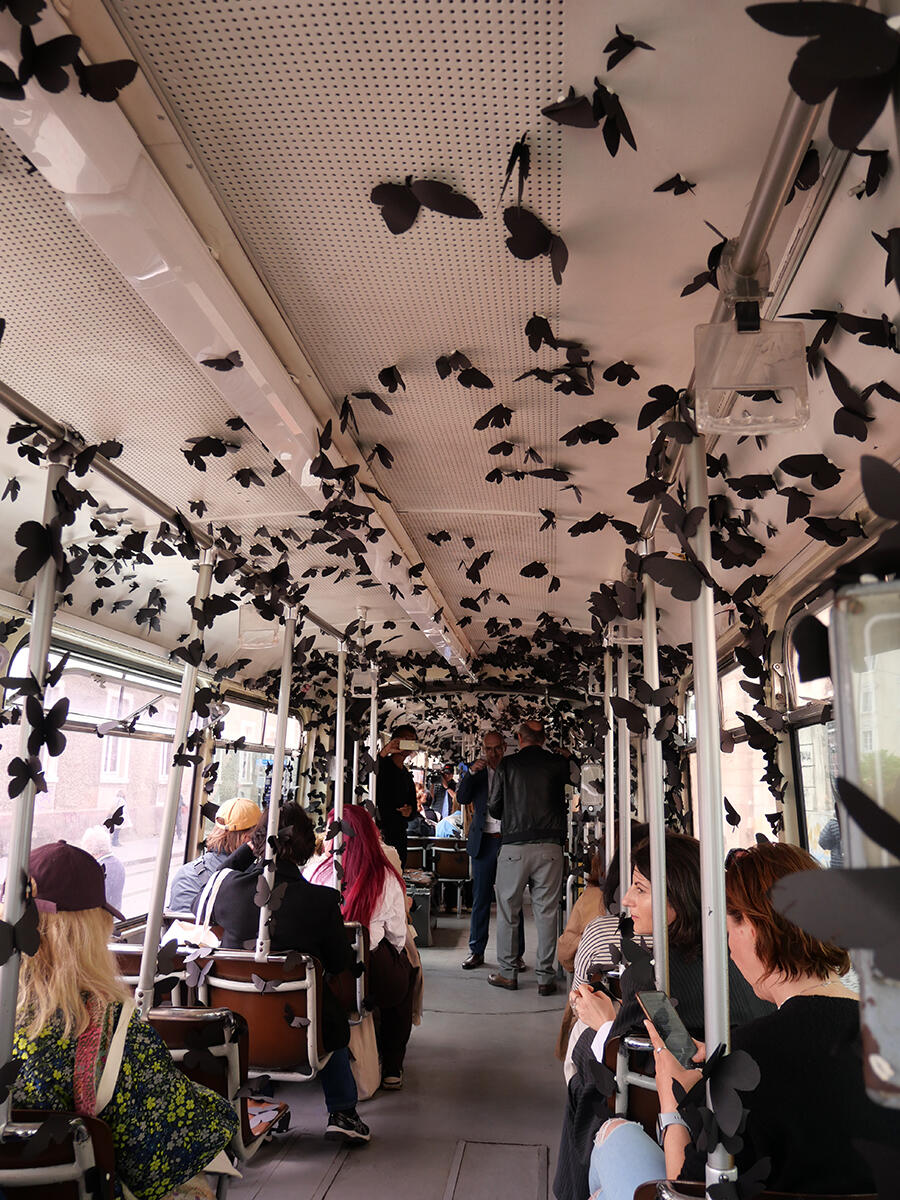
The programme ended, fittingly, with a tram ride designed by Carlos Amorales. The vehicle moved slowly, almost as if in pain, down the broad streets of Timișoara; its brown leather seats worn out, its grey interior covered by thousands of black paper butterflies, part of Amorales’ Black Cloud series (2007–ongoing). They pepper every surface, sticking to the backs of fellow travellers. We don’t know the exact direction this cart is headed to, but we take comfort in the fact that it is still moving.
Art Encounters’ ‘My Rhino is Not a Myth’ is on view at various locations in Timișoara, Romania until 16 July 2023
Main image: Albrecht Dürer, Rhinocerus, 1515, woodcut. Courtesy: Collection of Prints and Drawings, ETH Zürich

